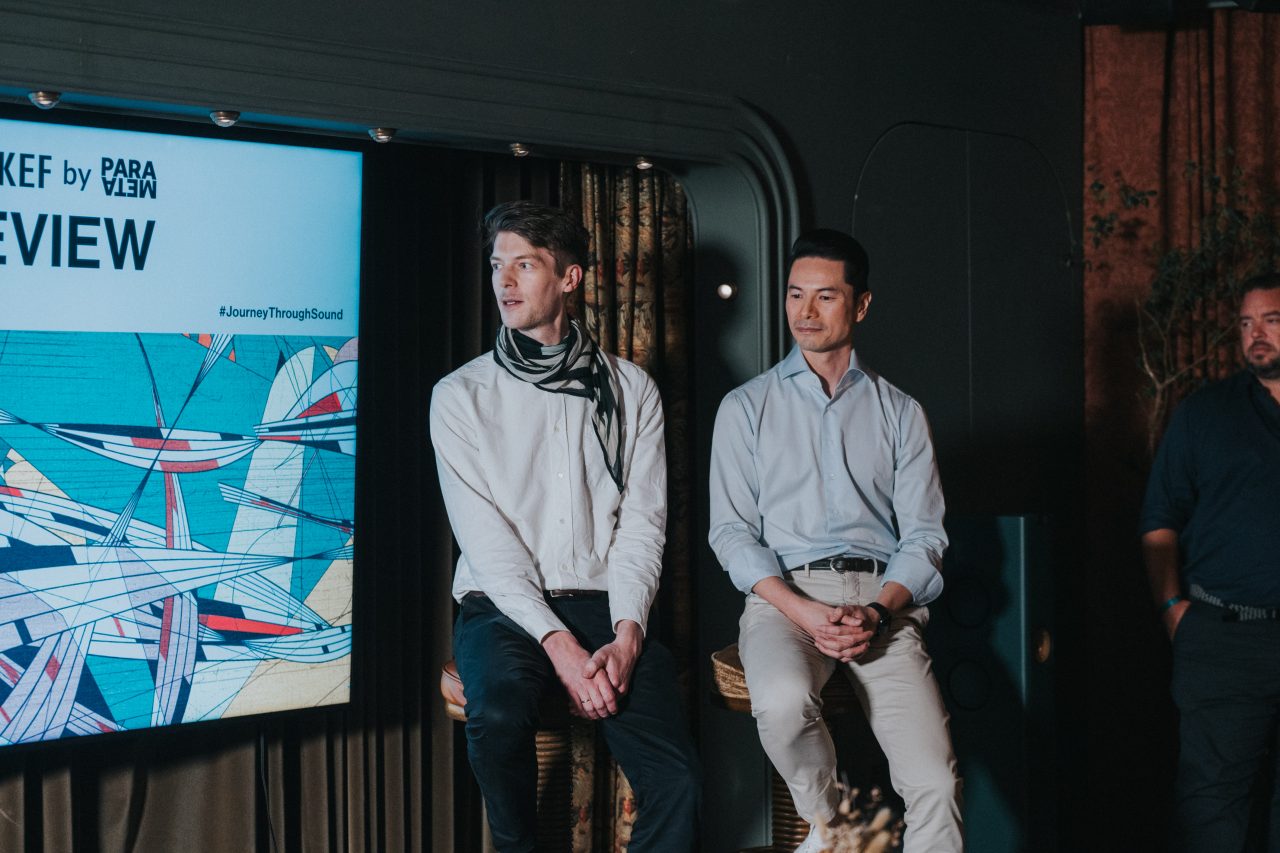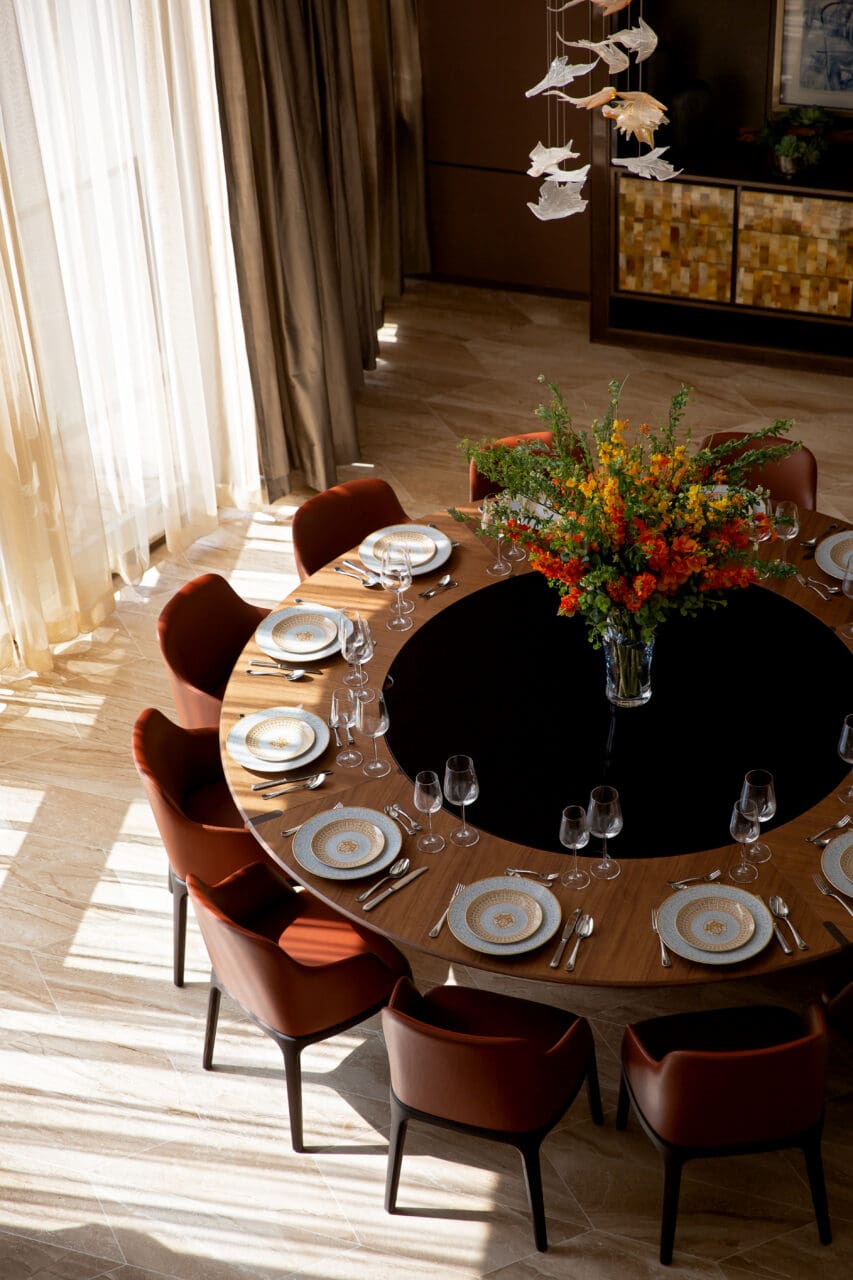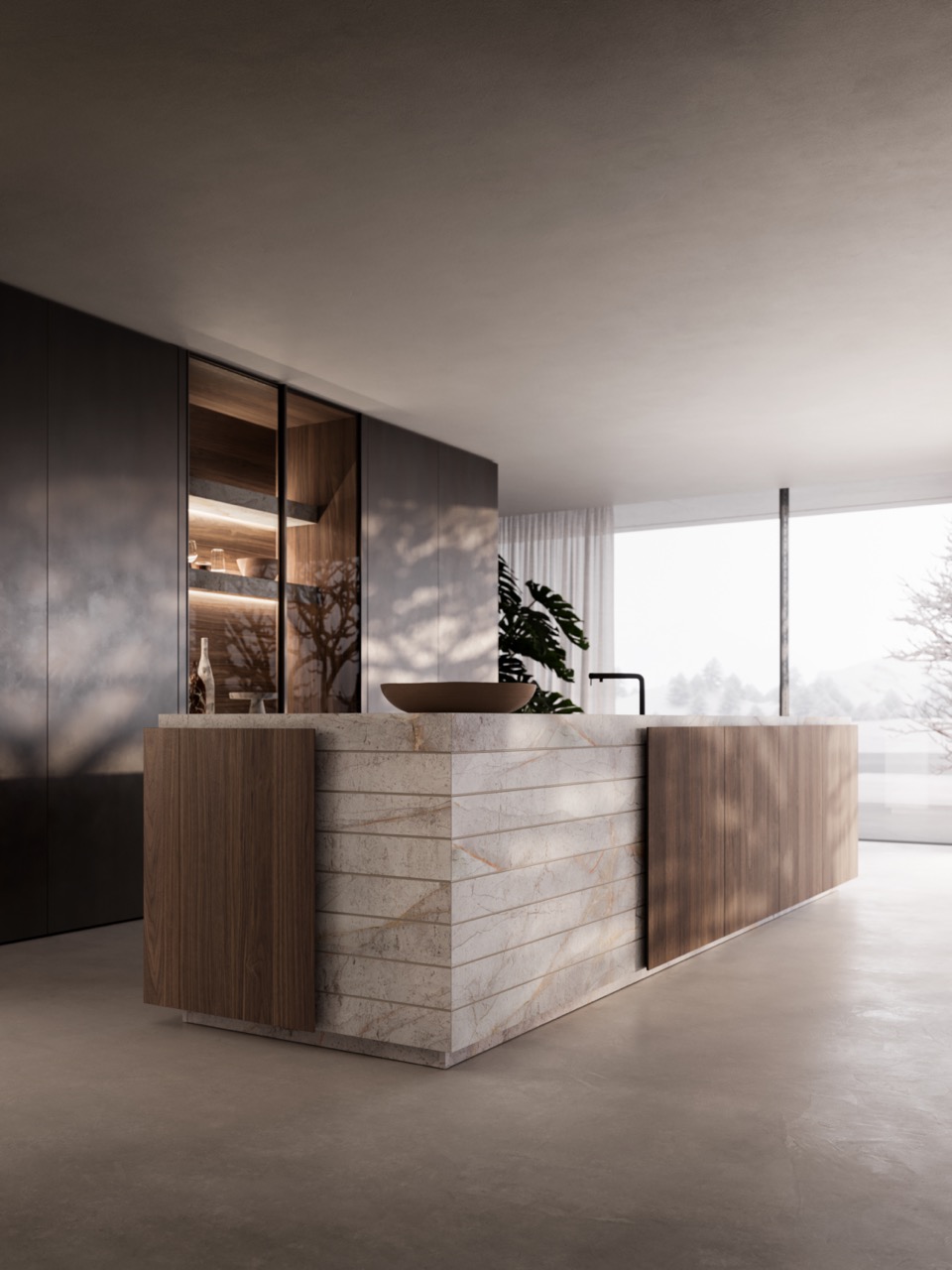Art often begins and ends with the artist and his audience. But from the plush cinema seats of the Soho House theatre, I watched as a computer forged new lines of music and geometric compositions that morphed seamlessly into each other, taking creation onto an unforeseen journey of its own. Titled ‘Duet’, this ever-evolving generative artwork is the creative brainchild of Andreas Rau, presented as part of the ongoing “Journey Through Sound” project between KEF and creative development studio Parameta looking to question the notions of web3.

Andreas Rau (left) and Gus Lee (right) of Parameta kick off the 'Duet' Preview with an introduction into the world of human-machine creation.
Premiering for the first time in Hong Kong, ‘Duet’ is a compelling live performance that perfectly encapsulates the spirit of art in today’s world, where our relationship with technology is of tremendous intrigue. “There are many layers to ‘Duet’ but fundamentally it is an exploration in relationships,” says Rau. “Mostly between ourselves and how we relate to an increasingly fast-changing world that we don’t always recognise.”
For the performance, man and machine are placed side-by-side, a powerful visual in and of itself. Based on a code Rau wrote, the computer generates visuals, music and a musical score all in real-time, the latter played out on a keyboard by the artist himself. It’s a formula that opens up the artwork to more possibilities, but also to more risk. “The result may not always be harmonious, or very fitting for the musical narrative over time,” admits Rau. “That’s why I allow myself some freedom to deviate from the computer-generated score, and improvise.”
The inaugural 'Duet' Preview was held at The Screen, Soho House.
Coupled with the fact that the computer essentially reinterprets existing melodies Rau has previously composed, the very nature of ‘Duet’ is transactional. It is an eternal dance between leadership and observation. “The boundaries between myself and the computer are blurred a bit. Who is in charge of the artwork, the artist or the machine? Generative art in general raises this question about authorship. In ‘Duet’, I wanted to emphasise the collaborative aspect in this: it is only human and machine together that can achieve these results, in a continuous dialogue, or – a duet.”
What materialises are saturated slices of colour and intersecting lines that float across the screen, accompanied by layers of sound that expand and transform the more the computer learns from its past melodies. As an audience, we are free from the limitations of what to expect, instead immersed in a strangely intimate and emotional experience that is wholly new with every passing second. As its creator, Rau feels the same way.
“Of course, there is always a certain familiarity – after all, I wrote the code. But sometimes, something entirely new emerges from the computer program and this is when it gets interesting to me. The randomness of it bears the potential of unforeseen beauty — an important ingredient to generative art.”
A largely unconsumed area of the arts for many, generative art is often misunderstood to be an interchangeable term for impersonal art created by prompt-based AI tools. Some like Dall-E or Midjourney, we may have even experimented with before. But with its unprecedented ability to move, ‘Duet’ is a fine example that there is much more to the practice than typically understood. “In the process of creating Duet I have reflected a lot about the collaborative nature of my practice,” says Rau. “Even though I mainly work alone, it’s only together, through and with the computer that my pieces come to life.”
“I think of ‘Duet’ not only as an audiovisual piece, but also as a work that very much belongs to the space it’s performed in. The preview performances in Hong Kong were intentionally intimate, with the audience seated in a cinema setting. In the future, I want to make use of the space even more, and emphasise the spatial nature of sound. This spatiality becomes very apparent in the real world but is often abstracted to just stereo sound in recordings. In the end, I want ‘Duet’ to feel like [a] metaphorical walk in the woods, where the viewer is surrounded by sounds and can behave as a physical being in a physical world.”
Rau’s masterpiece marks the beginning of more generative audio artworks to follow in “Journey Through Sound”. In continuing their quest to understand the creative relationship between the artist and the machine in this modern world, KEF and Parameta will be bringing ‘Duet’ to more global audiences in 2024.
Editor
Alyanna Raissa J. Payos









